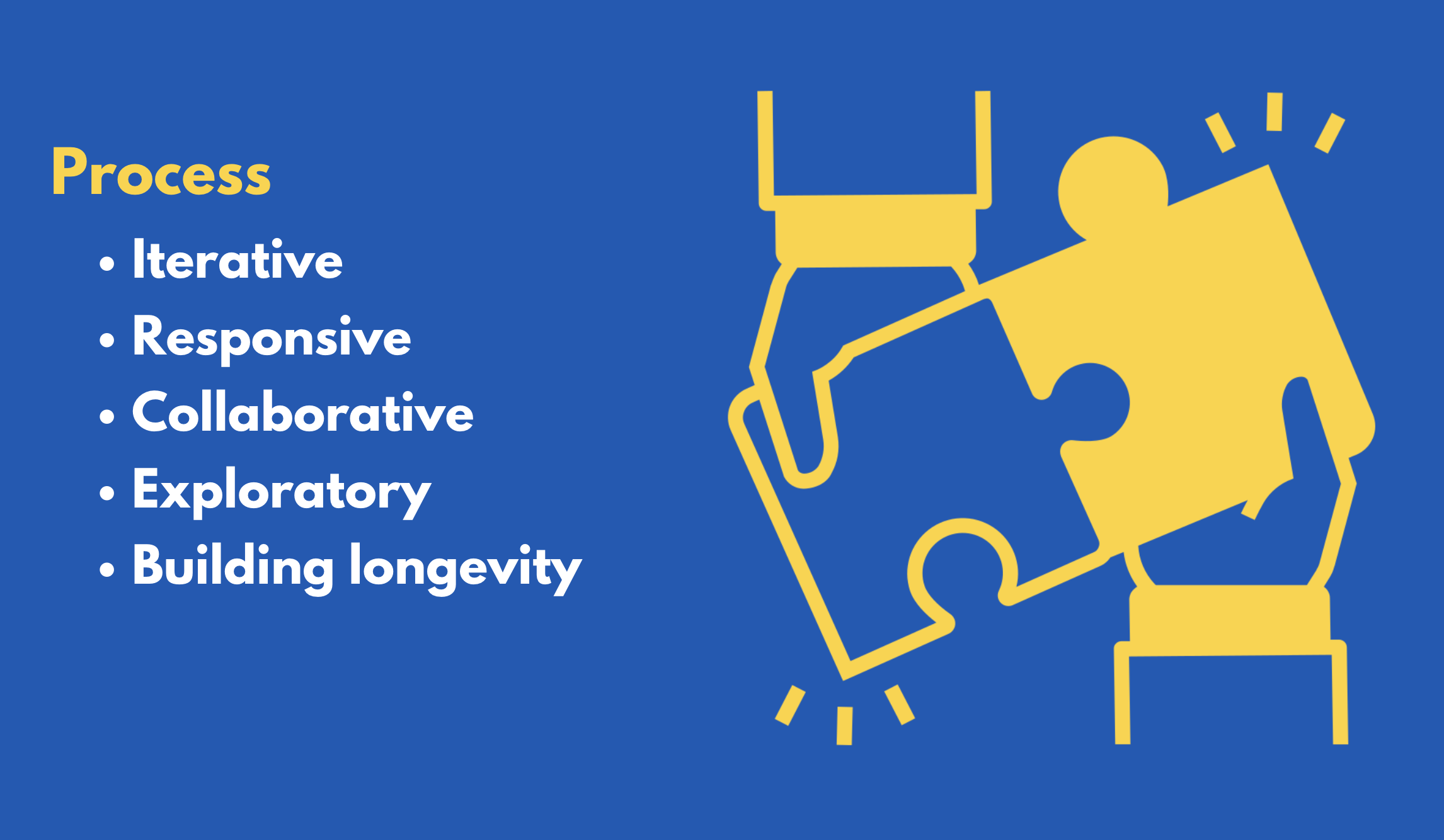We often speak of semi-structured interviews within Service Design. An approach that requires a level of planning certain themes or questions that the interviewer would like to cover within the session, whilst still allowing for flexibility in terms of order, phrasing, or even relevant tangents. I find it is most often the most effective way to engage with participants. It ensures that you’re prepared and have considered the purpose and goals of the interview, but it also leaves room for the conversation to follow a path that you may not have considered and unearth new insights. Additionally, the discussion can be more natural and informal, which can help support both to feel more comfortable contributing and learning from one another.
Fundamentally, semi-structured is a concept that can be applied to all areas of a Service Design process. It’s a field that requires continuous doing, reflecting, adjusting, and repeating. Iterative was hardly part of my vocabulary before I began working in this area. It’s never as linear or straightforward that any of the frameworks that we reference.
But what does that mean in practice? How do we plan for the unknown? We can’t always know in advance all the factors that will impact our process. Who should and can be involved? How many times will we need to adjust something? How long will we need? What resources will be required? We can even go into a new project not knowing what the actual challenge that we’re trying to address will be. This is when the semi-structured approach must exist within all phases of our work. We need to plan ahead, but of that plan must include the flexibility to change.
For instance, I’m currently preparing for a series of workshops with a range of partners. This all began with a rough concept of topic to address and timeframe to work within. (Spoiler alert: both of these ended up changing anyway) However, it also included a whole host of unknowns, such as how many people or even who we would be collaborating with. We had to start somewhere. We’ve now reached the stage where we’ve got participants expressing interest and we need to properly launch the project so that they can understand the project purpose and what their involvement would require. How can we offer a clear and attractive understanding of such an exploratory and iterative project? Ultimately, this came down to three areas:
- Defining core goals
- Creating flexible frameworks
- Setting expectations
Defining Goals
No matter what form this project ultimately takes, there are certain core things that we need achieve. These exist in a number of areas, including funding requirements, strategic project goals, and partner benefits. As long as we maintain a strong, shared understanding of what our goals are throughout the course of the project, we can adapt our ways of working in response to what best suits our needs.
Creating Flexible Frameworks
In order to collaborate with our partners in this project, we need to provide them with a realistic expectation of their time and involvement. In this instance, we’ve divided the work required into flexible stages – ones that can be done altogether or separately depending on each partner’s capacity. This could result in a full day’s workshop or mini versions across a series of weeks. We’ve also identified which steps are optional, adding to the process but not essential to it’s success.

Setting Expectations
The final element involves bringing our partners on board with a service design mindset. By making it clear from the offset that this is an exploratory process with room to evolve, we can all approach the work with shared intentions. It allows people to be more open to experimentation and helps show how adjustments from the original plan can be beneficial.
There’s no one way to semi-structure any kind of engagement. But I’ve found these elements of identifying and maintaining a clear purpose, offering options and planned adjustments where possible, and outlying clear expectations from the start a good approach.
